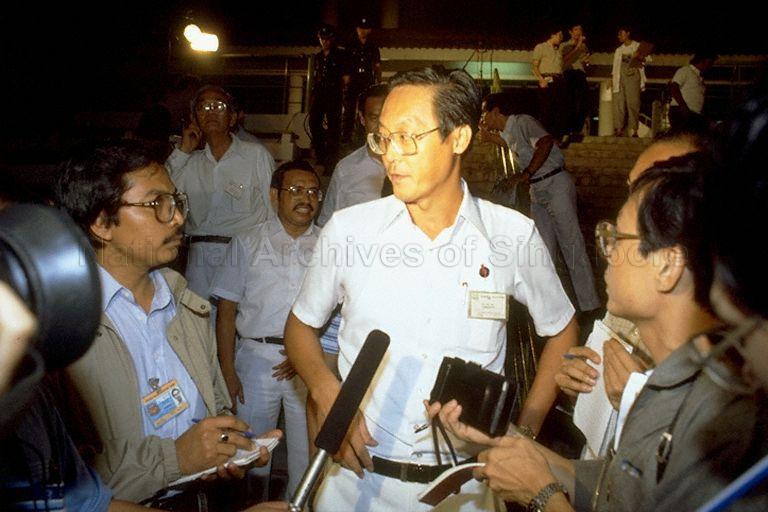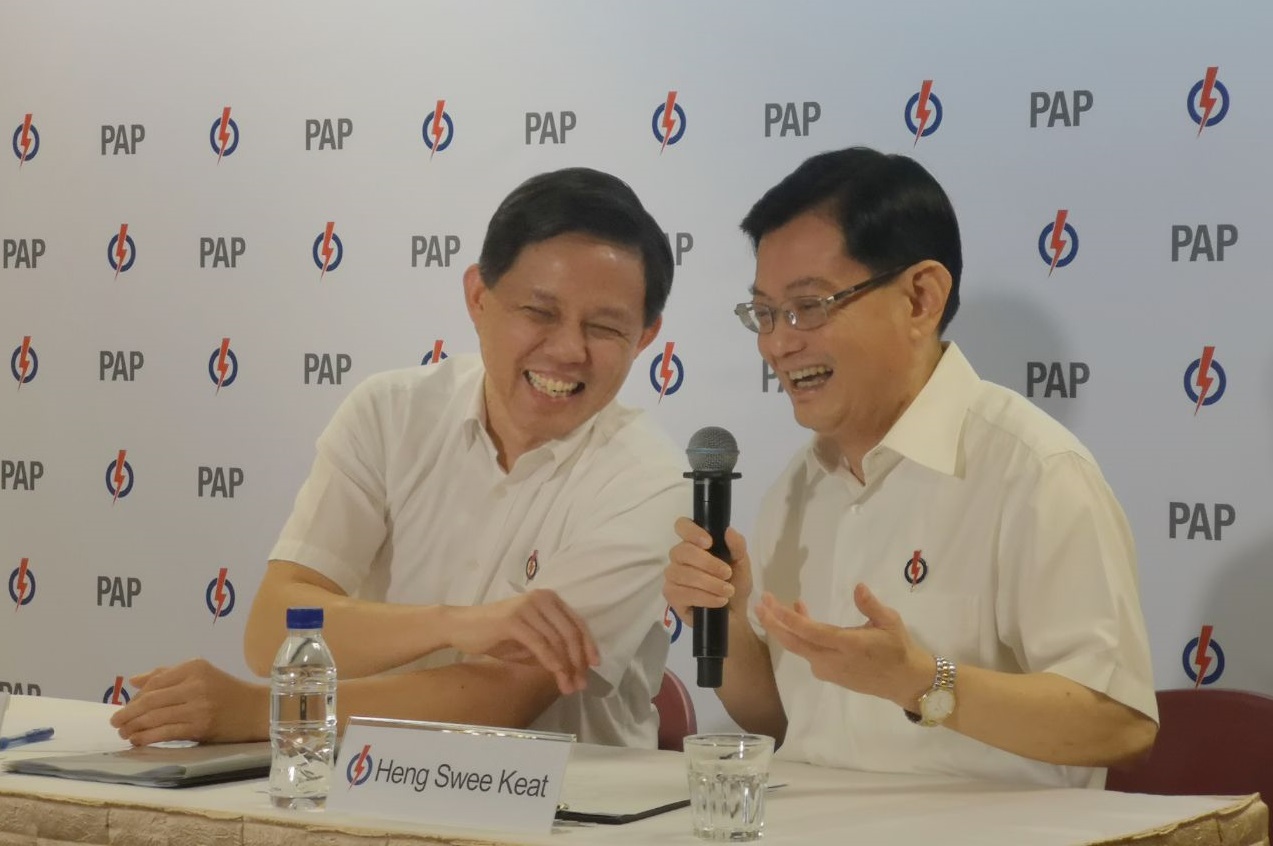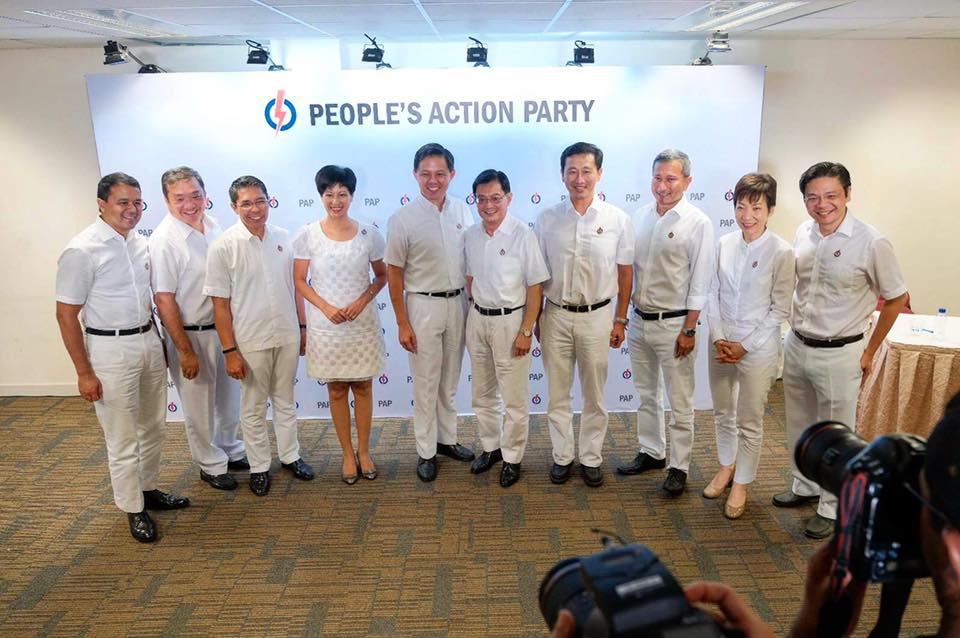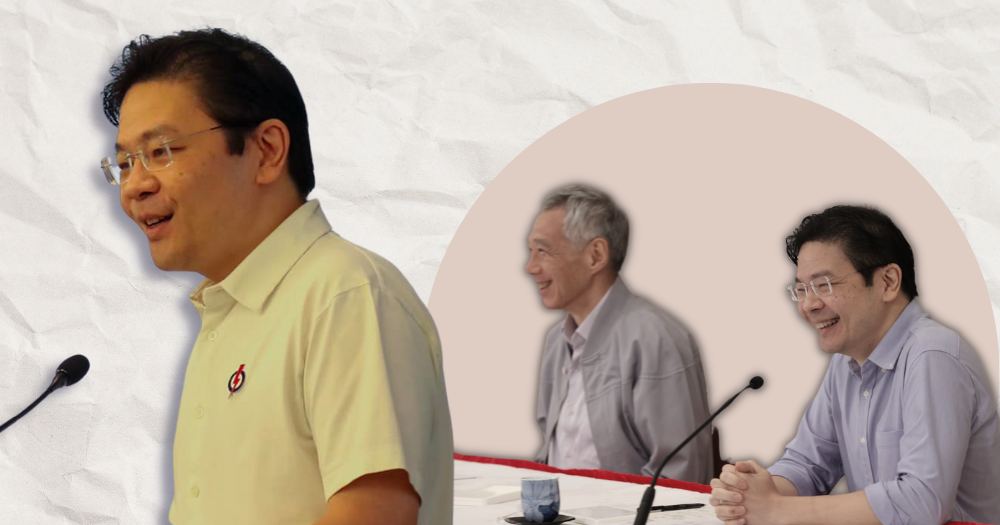Follow us on Telegram for the latest updates: https://t.me/mothershipsg
The ruling People's Action Party (PAP) will go through an important internal election this coming Sunday, Nov. 6.
This is the biennial election for its Central Executive Committee (CEC), which is the political party's highest decision-making body.
The party cadres will directly elect 12 CEC members, while another six members could be co-opted, as stated in the Party constitution.
So, what will the election results, voted by more than 3,000 party cadres on Sunday, reveal?
What is the PAP CEC
According to historian Shashi Jayakumar's A History of the People's Action Party (1985 - 2021), cadres make up a small proportion of the party's membership.
They represent the party elite, carefully screened and selected, with the ultimate power of electing the party CEC.
There are no public figures revealing how many PAP cadres there are, but a 2020 press statement by the PAP stated that more than 3,000 cadres voted in the PAP's 2020 conference.
According to the book, the party conference became a biennial affair from 1982 onwards.
Article VII of PAP's constitution states that:
"The Central Executive Committee shall consist of not more than eighteen [18] members of whom twelve [12] shall be elected at the Ordinary Party Conference and shall hold office until the conclusion of the following Ordinary Party Conference [...] The Central Executive Committee shall have the power to co-opt not more than six members to the Central Executive Committee who shall hold office until the conclusion of the following Ordinary Party Conference".
This means that Sunday's conference is likely to see 12 to 14 party leaders elected and welcomed on stage.
According to Jayakumar, "the usual practice was for the Sec-Gen to co-opt, sometimes immediately after the vote, the two individuals not directly elected but with the next highest votes".But the PAP CEC election does not end here with the election of 12 leaders and the co-opting of up to six more members to its highest decision-making body.
What is more significant is the subsequent election among the CEC members for the office-bearing posts.
Under the PAP's constitution, the CEC "shall elect, from amongst its members, the office-bearers for the posts of Chairman, Vice-Chairman, Secretary-General, Assistant Secretary-General, Treasurer, Assistant Treasurer and such other posts as it deems necessary to establish".
Current PAP CEC
Here are the members of the current 36th PAP CEC, elected in 2020:
1. Gan Kim Yong, Chairman
2. Masagos Zulkifli, Vice Chairman
3. Lee Hsien Loong, Secretary-General
4. Heng Swee Keat, 1st Assistant Secretary-General
5. Chan Chun Sing, 2nd Assistant Secretary-General
6. K Shanmugam, Treasurer
7. Ong Ye Kung, Assistant Treasurer
8. Grace Fu, Organising Secretary
9. Desmond Lee, Organising Secretary
10. Alex Yam, Member
11. Edwin Tong, Member
12. Indranee Rajah, Member
13. Josephine Teo, Member
14. Lawrence Wong, Member
15. Ng Chee Meng, Member
16. Tan Chuan Jin, Member
17. Victor Lye, Member
18. Vivian Balakrishnan, Member
High likelihood of Lawrence Wong becoming 1st Assistant Secretary-General
One highly probable change will be the election of Lawrence Wong as the 1st Assistant Sec-Gen (1ASG), in the subsequent office-holders' election after the CEC election.
Wong was made a CEC member after the 2012, 2014, 2018 and 2020 conferences, and is all but guaranteed to be elected this Sunday.
What is the role of the 1ASG?
Under the PAP constitution, the 1ASG "shall assist the Secretary-General in the discharge of his duties, powers and responsibilities and in the absence of the Secretary-General shall act in his place".
And what does history reveal about the significance of the role?
The position of the 1ASG has been traditionally held by the prime minister-in-waiting (Goh Chok Tong, Lee Hsien Loong, Heng Swee Keat) or a deputy prime minister or a minister who is about to be appointed to be DPM by the PM.
 Goh Chok Tong in the 1984 General Election. Photo via NAS.
Goh Chok Tong in the 1984 General Election. Photo via NAS.
From 1984 - 1992, Goh Chok Tong was the 1ASG. He became DPM in 1985.
From 1992 – 2004, Lee Hsien Loong was the 1ASG. He had already been appointed as DPM in 1990 when he was first elected as 1ASG in 1992.
From 2004 - 2010, Wong Kan Seng was the 1ASG. He became DPM in 2005.
From 2010 - 2018, Teo Chee Hean was the 1ASG. He was already DPM in 2009 when he was elected as 1ASG in 2010.
From 2018 - 2022, Heng Swee Keat is the 1ASG. He became DPM in 2019.
If the PAP follows past precedents, Wong, who is DPM and 4G leader, is likely to be elected as 1ASG after the CEC election.
History of 2nd Assistant Secretary General
One appointment that may be affected by the election of a new 1ASG is the 2nd Assistant Secretary General (2AG).
In 2018, the election of Heng Swee Keat and Chan Chun Sing as 1ASG and 2ASG occurred together; neither was in a senior office-bearing post (Chairman, Sec-Gen, Treasurer) in the previous CEC.
 Photo by Joshua Lee.
Photo by Joshua Lee.
Both continued in their roles after the 2020 party conference.
This may give people the mistaken impression that this time with Lawrence Wong likely to be made 1ASG, there will also be movement around the 2ASG post.
However, traditionally, the PAP leadership does not introduce two completely new individuals to the posts of 1ASG and 2ASG at the same time, with 2018 being the only exception.
In fact, the 2ASG post has been left vacant at times in the past.
Alternatively, it has also been filled by a minister when the previous 2ASG was promoted to 1ASG.
From 1984 - 1988, the position was left vacant.
From 1989 - 1992, Lee Hsien Loong was the 2ASG. Goh was the 1ASG.
From 1992 - 2004, Wong Kan Seng was the 2ASG. Lee was promoted to the 1ASG role.
From 2004 - 2010, Teo Chee Hean was the 2ASG. Wong was promoted to the 1ASG role.
From 2010 - 2018, Tharman Shamugaratnam was the 2ASG. Teo was promoted to the 1ASG role.
From 2018 - 2022, Chan Chun Sing was the 2ASG.
Little movements in PAP CEC composition, as a majority of leaders in CEC are made up of 4G leaders
It is unlikely that the composition of the PAP's CEC will change significantly at this year's elections.
This is because the renewal of the PAP party leadership from 3G to 4G was largely carried out in 2018.
In 2018, the PAP leadership saw the retirements of Khaw Boon Wan, Yaacob Ibrahim, Teo Chee Hean, Tharman Shanmugaratnam and Lim Swee Say as PAP CEC office holders.
 Photo via Lawrence Wong's Facebook post
Photo via Lawrence Wong's Facebook post
Currently, a majority of the CEC members are 4G leaders.
The ten 4G leaders, who were appointed by DPM Wong as part of the team to lead the Forward Singapore exercise are already in the CEC.
They include Masagos Zulkifli (PAP Vice Chairman), Chan Chun Sing (2ASG), Ong Ye Kung (Assistant Treasurer), Grace Fu (Organising Secretary), Desmond Lee (Organising Secretary), Tan Chuan-Jin, Indranee Rajah, Josephine Teo, Edwin Tong and Ng Chee Meng.
PAP historian Jayakumar noticed that there were occasions when individuals who had not been on the nomination list at the party conference were later co-opted by the CEC.
He noted that "this appears to have been used especially to bring in younger MPs and ministers who might not have their own support base within the rank and file of Party cadres, but who the CEC felt should be brought in on account of their being seen as part of the core leadership, or because they represented the younger MPs".
This has been observed in previous CECs, where 4G leaders like Ong Ye Kung, Lawrence Wong, Masagos Zulkifli, Desmond Lee and Edwin Tong were co-opted.
This move to bring in a more diverse group of leaders is also likely to occur for the co-option of two CEC members, who are likely to be back-benchers (Alex Yam, Christopher de Souza, Denise Phua) or a veteran candidate and cadre (Victor Lye).
The past five CEC elections have seen the biggest changes in the co-opting of back-benchers, as they usually do not stay for more than one term in the past decade.
The only exception was Potong Pasir MP Sitoh Yih Pin, who was part of the CEC after the 2016 elections and retained his spot after 2018.
Past PAP CEC articles
Top photo from Lee Hsien Loong Facebook and Lawrence Wong Facebook page
If you like what you read, follow us on Facebook, Instagram, Twitter and Telegram to get the latest updates.
